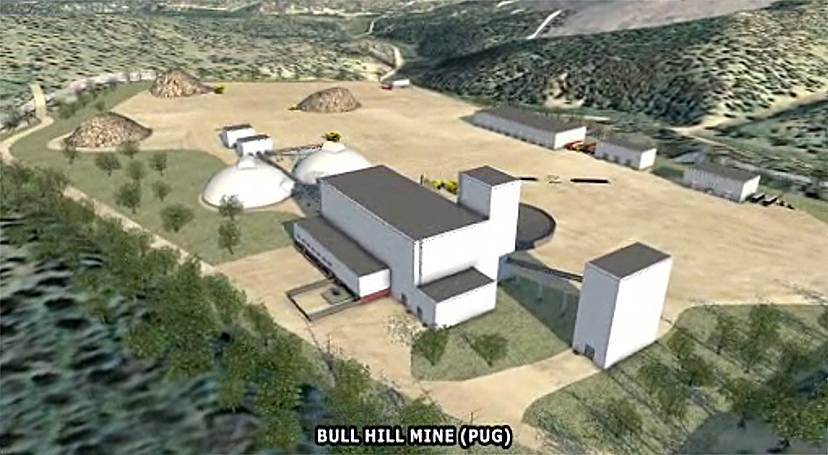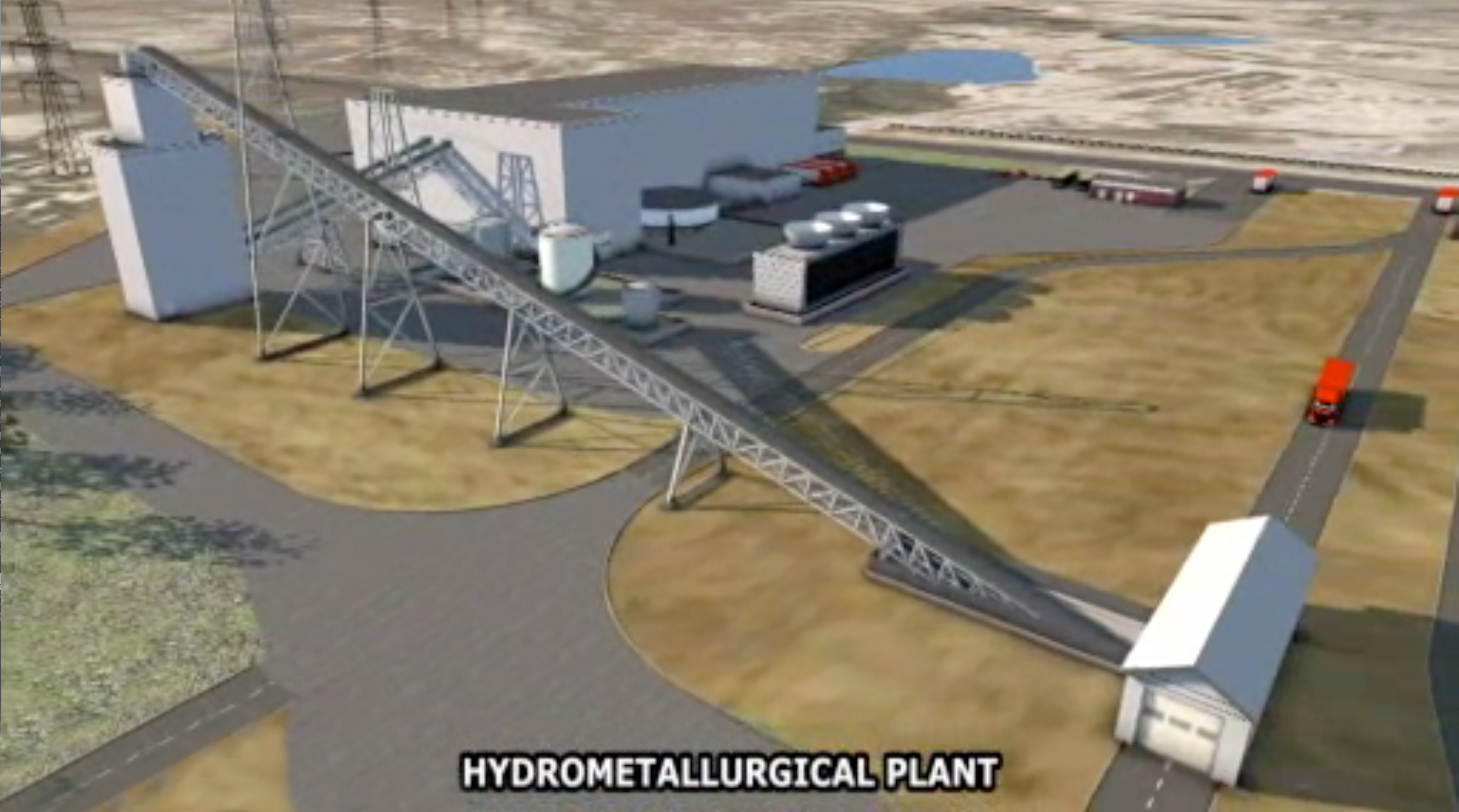Proposed Bear Lodge Operations
The proposed operations outlined below for the Bear Lodge Project are based on economic work completed in 2014 and 2015 and may be modified significantly by data generated from the planned demonstration plant, which will confirm the scalability of the Company's innovative recovery/separation technology.
As previously proposed, operations could consist of the following:
- A small surface mine,
- A Physical Upgrade (PUG) Plant located adjacent to the mine located on private land for mineral pre-concentration, and
- A Hydrometallurgical (Hydromet) Plant for further concentration, impurity removal and recovery of separate rare earth oxides from the mineral pre-concentrate, possibly located in Upton, Wyoming.
Mining
As proposed, mining would most likely be small, open pit. Both the Bull Hill and Whitetail Ridge mineralizations begin within a few yards, or meters, of the surface -- making them ideal for open pit mining.
Open pit mining normally utilizes conventional truck and excavator open pit methods. Topsoil and overburden would be removed first to expose the mineable ore and stockpiled separately for reuse in reclamation activities. When necessary, blasting would be employed to loosen large blocks of ore. There are several ore types to be mined from the two deposits, all of which would be hauled by dump truck from the mine site to separate ore stockpiles.
Mining would mostly likely occur in expanding benches, with expected depths averaging approximately 500 feet deep over the life of the mine. Total disturbance for the mine on public lands is expected to be approximately 260 acres over the life of the mine.
Physical Upgrade (PUG) Plant
As originally proposed, the PUG Plant would have removed barren rock from the material thereby increasing the concentration of the rare earth minerals to produce a mineral pre-concentrate. The PUG process would employ a series of crushing, washing, screening, and magnetic sorting methods to concentrate the rare earth-bearing fines and reduce the associated physical mass. The closed system would be designed to be water efficient and have no effluent discharge to surface waterways. The majority of the water would be recycled at the PUG plant with the remaining being recovered upon further processing at the Hydromet Plant. Because initial mining is expected to occur in a high-grade zone that will not need upgrading, some construction activities at the PUG Plant will not occur until later in the life of the project.
Artist Rendering of a Potential PUG Plant

Through extensive geological work, the type and grade of material is known to vary and would need to be sorted accordingly when mined. Low grade ores would be stockpiled for future processing while mid-grade and high-grade ore would be processed in the PUG Plant in the early periods. It is expected that these different ores will have different mass reduction and grade characteristics. Therefore, the PUG Plant will be designed to process the different ores with a goal of producing a bulk, mixed rare earth mineral pre-concentrate. The goal of the PUG would be to maximize the rare earth grade and recovery, while minimizing the mass of material that is hauled to the Hydromet Plant each day via covered trucks.
Hydrometallurgical (Hydromet) Plant
The potential Hydromet Plant is expected to be located in Upton, WY, approximately 40 miles from the mine site. Mineral concentrate would be delivered to the state-of-the-art Hydromet Plant from the PUG Plant via covered trailered trucks.
Artist Rendering of a Potential Hydromet Plant

The Hydromet Plant is expected to employ the process flowsheet developed by the Company and its technology partners and include any modifications or improvements identified through the operation of the planned demonstration plant. For more details on this process, please visit the Extraction/Separation Technology section of this website. The marketable products are expected to include the high-strength, permanent magnet materials neodymium/praseodymium (Nd/Pr), a SEG (samarium/europium/gadolinium) and heavy rare earth concentrate. It is anticipated that some of the equipment used in the demonstration plant, expected to be constructed in Upton, will be incorporated in any potential commercial facility.
The design of a potential Hydromet Plant would be to be a “zero discharge” facility with the ability to recycle a majority of the chemicals and water used in processing, eliminate discharges, and help reduce raw material costs and environmental waste handling costs. The tailings from this type of plant are expected to consist of the leach residue and solid residue produced from acid regeneration which would be de-watered, neutralized and disposed of at a tailings facility to be located adjacent to the Plant. The isolated Thorium would be transported to an off-site, licensed disposal facility.
The Company currently has an option on private property adjacent to the Upton Logistical Center for potential construction of the Hydromet facilities. The park serves as a rail trans-loading site for the Powder River Basin and other industries.